Perhydrocyclobuta[c]furan-1,3-dione
![Perhydrocyclobuta[c]furan-1,3-dione Structure](https://image.chemsrc.com/caspic/289/4462-96-8.png)
Perhydrocyclobuta[c]furan-1,3-dione structure
|
Common Name | Perhydrocyclobuta[c]furan-1,3-dione | ||
|---|---|---|---|---|
| CAS Number | 4462-96-8 | Molecular Weight | 126.110 | |
| Density | 1.4±0.1 g/cm3 | Boiling Point | 271.5±0.0 °C at 760 mmHg | |
| Molecular Formula | C6H6O3 | Melting Point | 73 ℃ | |
| MSDS | N/A | Flash Point | 139.4±15.9 °C | |
| Name | 3-Oxabicyclo[3.2.0]heptane-2,4-dione |
|---|---|
| Synonym | More Synonyms |
| Density | 1.4±0.1 g/cm3 |
|---|---|
| Boiling Point | 271.5±0.0 °C at 760 mmHg |
| Melting Point | 73 ℃ |
| Molecular Formula | C6H6O3 |
| Molecular Weight | 126.110 |
| Flash Point | 139.4±15.9 °C |
| Exact Mass | 126.031693 |
| PSA | 43.37000 |
| LogP | -0.89 |
| Vapour Pressure | 0.0±0.5 mmHg at 25°C |
| Index of Refraction | 1.530 |
Synonym:Cyclobutane-1,2-dicarboxylic acid anhydrid Section 2 - COMPOSITION, INFORMATION ON INGREDIENTS
Risk Phrases: 36/37/38 Section 3 - HAZARDS IDENTIFICATION EMERGENCY OVERVIEW
Irritating to eyes, respiratory system and skin.Moisture sensitive. Potential Health Effects Eye: Causes eye irritation. Skin: Causes skin irritation. May be harmful if absorbed through the skin. Ingestion: May cause irritation of the digestive tract. May be harmful if swallowed. Inhalation: Causes respiratory tract irritation. May be harmful if inhaled. Chronic: Not available. Section 4 - FIRST AID MEASURES Eyes: Flush eyes with plenty of water for at least 15 minutes, occasionally lifting the upper and lower eyelids. Get medical aid. Skin: Get medical aid. Flush skin with plenty of water for at least 15 minutes while removing contaminated clothing and shoes. Ingestion: Get medical aid. Wash mouth out with water. Inhalation: Remove from exposure and move to fresh air immediately. If not breathing, give artificial respiration. If breathing is difficult, give oxygen. Get medical aid. Notes to Physician: Treat symptomatically and supportively. Section 5 - FIRE FIGHTING MEASURES General Information: As in any fire, wear a self-contained breathing apparatus in pressure-demand, MSHA/NIOSH (approved or equivalent), and full protective gear. Extinguishing Media: Use foam, dry chemical, or carbon dioxide. Section 6 - ACCIDENTAL RELEASE MEASURES General Information: Use proper personal protective equipment as indicated in Section 8. Spills/Leaks: Vacuum or sweep up material and place into a suitable disposal container. Section 7 - HANDLING and STORAGE Handling: Avoid breathing dust, vapor, mist, or gas. Avoid contact with skin and eyes. Storage: Store in a cool, dry place. Store in a tightly closed container. Store under an inert atmosphere. Section 8 - EXPOSURE CONTROLS, PERSONAL PROTECTION Engineering Controls: Facilities storing or utilizing this material should be equipped with an eyewash facility and a safety shower. Use adequate ventilation to keep airborne concentrations low. Exposure Limits CAS# 4462-96-8: Personal Protective Equipment Eyes: Not available. Skin: Wear appropriate protective gloves to prevent skin exposure. Clothing: Wear appropriate protective clothing to prevent skin exposure. Respirators: Follow the OSHA respirator regulations found in 29 CFR 1910.134 or European Standard EN 149. Use a NIOSH/MSHA or European Standard EN 149 approved respirator if exposure limits are exceeded or if irritation or other symptoms are experienced. Section 9 - PHYSICAL AND CHEMICAL PROPERTIES Physical State: Solid Color: white Odor: Not available. pH: Not available. Vapor Pressure: Not available. Viscosity: Not available. Boiling Point: Not available. Freezing/Melting Point: 60 - 65 deg C Autoignition Temperature: Not available. Flash Point: Not available. Explosion Limits, lower: Not available. Explosion Limits, upper: Not available. Decomposition Temperature: Solubility in water: Specific Gravity/Density: Molecular Formula: C6H6O3 Molecular Weight: 126 Section 10 - STABILITY AND REACTIVITY Chemical Stability: Not available. Conditions to Avoid: Incompatible materials, exposure to moist air or water. Incompatibilities with Other Materials: Oxidizing agents, bases, amines. Hazardous Decomposition Products: Carbon monoxide, carbon dioxide, acrid smoke and fumes. Hazardous Polymerization: Has not been reported Section 11 - TOXICOLOGICAL INFORMATION RTECS#: CAS# 4462-96-8 unlisted. LD50/LC50: Not available. Carcinogenicity: Perhydrocyclobuta[c]furan-1,3-dione - Not listed by ACGIH, IARC, or NTP. Section 12 - ECOLOGICAL INFORMATION Section 13 - DISPOSAL CONSIDERATIONS Dispose of in a manner consistent with federal, state, and local regulations. Section 14 - TRANSPORT INFORMATION IATA No information available. IMO No information available. RID/ADR No information available. Section 15 - REGULATORY INFORMATION European/International Regulations European Labeling in Accordance with EC Directives Hazard Symbols: XI Risk Phrases: R 36/37/38 Irritating to eyes, respiratory system and skin. Safety Phrases: S 26 In case of contact with eyes, rinse immediately with plenty of water and seek medical advice. S 37/39 Wear suitable gloves and eye/face protection. WGK (Water Danger/Protection) CAS# 4462-96-8: No information available. Canada None of the chemicals in this product are listed on the DSL/NDSL list. CAS# 4462-96-8 is not listed on Canada's Ingredient Disclosure List. US FEDERAL TSCA CAS# 4462-96-8 is not listed on the TSCA inventory. It is for research and development use only. SECTION 16 - ADDITIONAL INFORMATION N/A |
|
~72% ![Perhydrocyclobuta[c]furan-1,3-dione Structure](https://image.chemsrc.com/caspic/289/4462-96-8.png)
Perhydrocyclobu... CAS#:4462-96-8 |
| Literature: Faure, Sophie; Jensen, Anders A.; Maurat, Vincent; Gu, Xin; Sagot, Emmanuelle; Aitken, David J.; Bolte, Jean; Gefflaut, Thierry; Bunch, Lennart Journal of Medicinal Chemistry, 2006 , vol. 49, # 22 p. 6532 - 6538 |
|
~98% ![Perhydrocyclobuta[c]furan-1,3-dione Structure](https://image.chemsrc.com/caspic/289/4462-96-8.png)
Perhydrocyclobu... CAS#:4462-96-8 |
| Literature: Tufariello, Joseph J.; Milowsky, Arnold S.; Al-Nuri, Mohammed; Goldstein, Steven Tetrahedron Letters, 1987 , vol. 28, # 3 p. 267 - 270 |
|
~% ![Perhydrocyclobuta[c]furan-1,3-dione Structure](https://image.chemsrc.com/caspic/289/4462-96-8.png)
Perhydrocyclobu... CAS#:4462-96-8 |
| Literature: Buchman et al. Journal of the American Chemical Society, 1942 , vol. 64, p. 2696,2697 |
|
~% ![Perhydrocyclobuta[c]furan-1,3-dione Structure](https://image.chemsrc.com/caspic/289/4462-96-8.png)
Perhydrocyclobu... CAS#:4462-96-8 |
| Literature: Schneider, Manfred; Engel, Norbert; Hoenicke, Petra; Heinemann, Gerd; Goerisch, Helmut Angewandte Chemie, 1984 , vol. 96, # 1 p. 55 - 56 |
|
~% ![Perhydrocyclobuta[c]furan-1,3-dione Structure](https://image.chemsrc.com/caspic/289/4462-96-8.png)
Perhydrocyclobu... CAS#:4462-96-8 |
| Literature: Earl, Harold A.; Stirling, Charles J. M. Journal of the Chemical Society, Perkin Transactions 2: Physical Organic Chemistry (1972-1999), 1987 , p. 1273 - 1280 |
| Precursor 6 | |
|---|---|
| DownStream 10 | |
| HS Code | 2917209090 |
|---|---|
| Summary | 2917209090 other cyclanic, cyclenic or cyclotherpenic polycarboxylic acids, their anhydrides, halides, peroxides, peroxyacids and their derivatives。supervision conditions:AB(certificate of inspection for goods inward,certificate of inspection for goods outward)。VAT:17.0%。tax rebate rate:9.0%。MFN tariff:6.5%。general tariff:30.0% |
| Perhydrocyclobuta[c]furan-1,3-dione |
| Cyclobutane-1,2-dicarboxylic anhydride |
| 3-Oxabicyclo[3.2.0]heptane-2,4-dione |
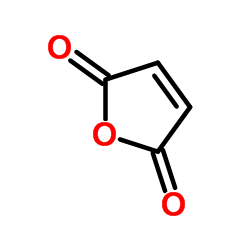

![3-oxabicyclo[3.2.0]hept-6-ene-2,4-dione structure](https://image.chemsrc.com/caspic/183/10374-07-9.png)
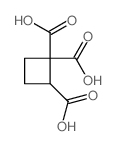
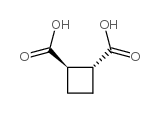
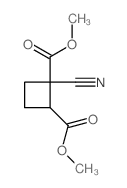
![3-azabicyclo[3.2.0]heptane-2,4-dione structure](https://image.chemsrc.com/caspic/005/1122-09-4.png) CAS#:1122-09-4
CAS#:1122-09-4 CAS#:124-38-9
CAS#:124-38-9 CAS#:201230-82-2
CAS#:201230-82-2 CAS#:106-99-0
CAS#:106-99-0 CAS#:822-35-5
CAS#:822-35-5![3-butyl-3-azabicyclo[3.2.0]heptane-2,4-dione structure](https://image.chemsrc.com/caspic/299/100131-99-5.png) CAS#:100131-99-5
CAS#:100131-99-5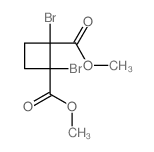 CAS#:10359-27-0
CAS#:10359-27-0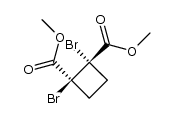 CAS#:3246-91-1
CAS#:3246-91-1